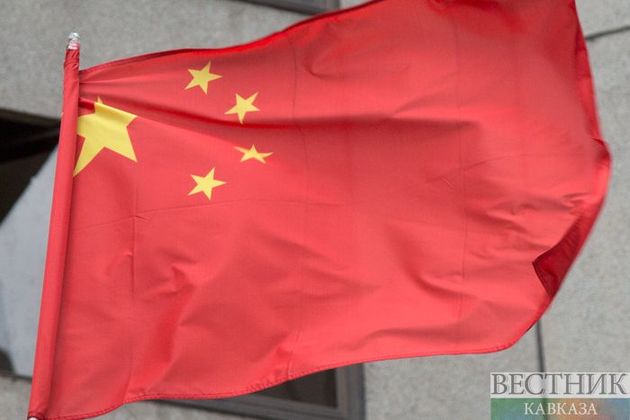As the Second Karabakh War ended, all regional players’ interests were scrutinized in detail. One power, however, China, was largely absent from the analysis. Official rhetoric from Beijing indicates the continuation of China’s non-intervention policy in the region. However, its position also indicates the limits of China’s involvement in the South Caucasus, China Observers writes in the article The Limits of China’s Involvement in South Caucasus. There is a good deal of ambivalence in the Chinese position on the South Caucasus. The country’s ambassadors to the region’s three states – Armenia, Azerbaijan, and Georgia – often announce how important the Caucasus is, but Beijing’s investment policies and political moves reflect little of the vocalized grand geopolitical thinking.
Great expectations
As late as 2017 the prospects seemed rosier, with each South Caucasian state hoping for a larger Chinese presence. In 2017, China and Georgia signed a free trade agreement. Georgian government hoped the country’s location on the Black Sea. With several ports such as Batumi, Poti and the then-planned Anaklia deep seaport, Baku-Tbilisi-Kars (BTK) railway and East-West Highway, would allow it to operate as a logistics and transit hub for the expanding Belt and Road Initiative – a near-trillion US dollar Chinese initiative aimed at linking the Indo-Pacific region with the European market.
Moreover, there was a geopolitical aspect to the Georgian-Chinese cooperation. Deeper economic penetration into Georgia could spell a greater stake in Georgia’s stability and security for Beijing. For Tbilisi, relations with China were in a way a means to mitigate Russian geopolitical pressure following the Fiva-Day War in 2008.
A similar understanding was behind Armenia’s and Azerbaijan’s calculations. Chinese investment, especially in infrastructure, was to be the main driver of the nascent cooperation in both cases. After all, most of the infrastructure hails from the Soviet era, making financing for new construction badly needed.
Baku in particular was enthusiastic about infrastructure development in Central Asia as well as a steady growth of shipments from China, as it could provide a boost for the South Caucasus transport and energy corridor. Over the past years the ports of Baku and a small city of Alat have invested into improving their infrastructure. Alat is especially promising as an estimated transshipment of the new port complex potentially reaches 25 million tons of cargo and 1 million twenty-foot equivalent unit (TEU) per year. As was the case with Georgia, Armenia and Azerbaijan too looked at China as a source for diversification of their foreign policy orientation. Baku and Yerevan enjoy deep economic and military cooperation with Moscow, but uneasiness in both capitals about Russian geopolitical pressure persists. As such, China could have played a pivotal role in mitigating their fears of dependence on Moscow. Last, but not least, Armenia also pinned its hopes on the economic involvement of China in the country. Though sandwiched between the rival Turkey and Azerbaijan and having only two borders open – in the north with Georgia and in the south with Iran – the country has been positioning itself as a potential transit corridor for Chinese goods from Iran to the Black Sea.
Reality check
None of the hopes of the South Caucasus countries regarding China have materialized. Perhaps the hope for more active Trans-Caspian transshipment could still be realized in one form or another, but overall, the South Caucasus has seen little Chinese investment or general geopolitical attention from Beijing. Trade with the three states has grown, but it has not so far been a game changer. Moreover, official BRI documents published in China over the past years too do not mention the region as a potential corridor to the European Union.
For China, the South Caucasus plays a modest role. In terms of BRI, the Russian corridor is a logical option for China-Europe links. Rather than transporting goods via the Caspian and Black Seas a direct Russian route may be longer in terms of distance, but is more feasible in practice. Other aspects of geography put limits on Chinese engagement in the South Caucasus as well. Unlike Central Asia, the region does not border on China. It also does not represent a primary security concern for Beijing, which would have necessitated larger engagement similar to Chinese actions in Tajikistan.
In a way, this physical distance does provide a certain advantage. Beijing can approach the region unencumbered by the problems its faces in Central Asia. Mistrust towards and fear of Chinese expansionism pervade the moods of political elites and the general public of Central Asian states, but this is not the case in the South Caucasus. Further, China has not so far gotten embroiled in internal affairs of the region’s three states and has not awarded special preference to governments on ideological grounds. Ideally this would pave the way for a more active Chinese involvement. However, we have not seen Beijing tapping into this opportunity so far.
The rationale for China’s reluctance to engage the South Caucasus could be Russia, which regards the region as its sphere of influence. Considering the budding partnership between Moscow and Beijing, the latter might be unwilling to challenge Russia’s geopolitical preeminence. However, the Russia factor is not sufficient to explain Chinese abstention. After all, China does challenge Russia’s position in Central Asia and Moscow has been very careful not to voice its concerns openly.
In many ways China’s relative inconspicuousness in the South Caucasus is dictated by its position on the Black Sea, a strategic location providing connection to Eastern, Central, Southern Europe, and Russia. It also allows access to the Mediterranean through the Bosphorus and Dardanelles Straits. Being involved in this sea would offer serious geopolitical opportunities to China, but much depends on energy availability. As the demand for oil and gas resources in China increases, so does Beijing’s quest to find new energy sources and safe avenues for import.
However, trends indicate that the Black Sea does not stand out in this regard. Black Sea adjacent states, with the significant exception of Russia (though even the latter exports gas and oil to China from its deposits in Siberia), have little to no direct energy trade with China. Overall, the resource potential of the Black Sea is too uncertain to invite deeper Chinese involvement. Even with Turkey which recently made gas discoveries in the Black Sea, the Chinese stance is unlikely to change as the potential gas deposits would mostly be consumed by Turkey’s growing internal demands.
Instead, the region seems to be much more important for other actors, mainly the EU and Russia .China does not seem motivated to compete with these other players when the potential benefits remain uncertain. The South Caucasus is of critical importance to the EU’s energy security as a transport corridor through which as much as 10 percent of Europe’s oil and oil import transit. The EU is also heavily involved in the region through its Eastern Partnership and the Transport Corridor Europe-Caucasus-Asia (TRACECA) projects. Besides, Russia’s growing military involvement in the Black Sea also limits Chinese potential involvement in the region. A geopolitically overcrowded Black Sea region provides little incentive for Chinese companies.
No breakthrough in sight
Looking ahead, the picture is not promising for the realization of the South Caucasus states expectations. It appears instead that both global and regional trends will limit China’s involvement in the region. Though China has performed much better than others economically following the negative effects of the COVID-19 pandemic, its growth remains unstable and government debt is soaring. This will put pressure on China’s willingness to lend money abroad, which does not portend well for the South Caucasus. Most likely, the region will remain overshadowed by other regions of primary importance for BRI – Southeast Asia, Central Asia and the Middle East.
A changing balance of power in the Black Sea and the Russo-Turkish geopolitical pre-eminence in the South Caucasus following the second Karabakh War will further limit Chinese companies’ willingness to invest or participate in region-wide projects. The South Caucasus will remain a major fault line between Russia and the West. Finally, one must account for US pressure on the South Caucasus states. As the region will be subject to the great power competition between China and the US, Georgia and, to a certain extent Azerbaijan, will face a dilemma of damaging bilateral relations with Washington should they invite large Chinese investments into the countries’ critical infrastructure.










